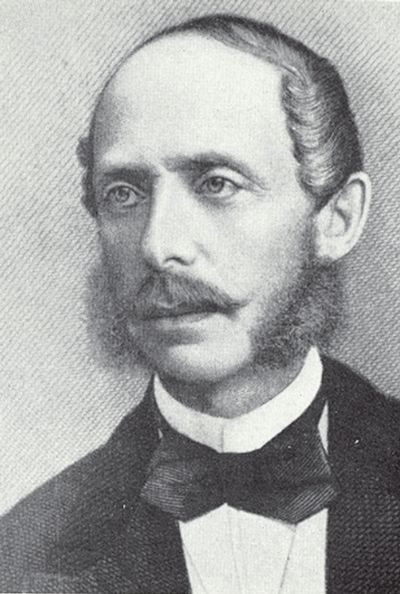Heinrich Eduard Von Lade on:
[Wikipedia]
[Google]
[Amazon]
 Heinrich Eduard von Lade (24 February 1817 – 7 August 1904) was a German banker and amateur
Heinrich Eduard von Lade (24 February 1817 – 7 August 1904) was a German banker and amateur
Planetaria
1817 births 1904 deaths 19th-century German astronomers People from the Rheingau {{Germany-astronomer-stub
 Heinrich Eduard von Lade (24 February 1817 – 7 August 1904) was a German banker and amateur
Heinrich Eduard von Lade (24 February 1817 – 7 August 1904) was a German banker and amateur astronomer
An astronomer is a scientist in the field of astronomy who focuses their studies on a specific question or field outside the scope of Earth. They observe astronomical objects such as stars, planets, natural satellite, moons, comets and galaxy, g ...
.
He was born in Geisenheim
Geisenheim is a town in the Rheingau-Taunus-Kreis in the ''Regierungsbezirk'' of Darmstadt in Hessen, Germany, and is known as ''Weinstadt'' (“Wine Town”), ''Schulstadt'' (“School Town”), ''Domstadt'' (“Cathedral Town”) and ''Lindenstad ...
, located along the banks of the Rhine river
), Surselva, Graubünden, Switzerland
, source1_coordinates=
, source1_elevation =
, source2 = Rein Posteriur/Hinterrhein
, source2_location = Paradies Glacier, Graubünden, Switzerland
, source2_coordinates=
, sourc ...
, the son of a wine merchant. He worked as a banker and exporter in Hamburg
(male), (female) en, Hamburger(s),
Hamburgian(s)
, timezone1 = Central (CET)
, utc_offset1 = +1
, timezone1_DST = Central (CEST)
, utc_offset1_DST = +2
, postal ...
and Paris
Paris () is the capital and most populous city of France, with an estimated population of 2,165,423 residents in 2019 in an area of more than 105 km² (41 sq mi), making it the 30th most densely populated city in the world in 2020. S ...
, and by the age of 44 he had earned enough to retire.
In 1861 he built a private estate Monrepos in Geisenheim
Geisenheim is a town in the Rheingau-Taunus-Kreis in the ''Regierungsbezirk'' of Darmstadt in Hessen, Germany, and is known as ''Weinstadt'' (“Wine Town”), ''Schulstadt'' (“School Town”), ''Domstadt'' (“Cathedral Town”) and ''Lindenstad ...
. There he dedicated himself to culturing fruit and wine
Wine is an alcoholic drink typically made from fermented grapes. Yeast consumes the sugar in the grapes and converts it to ethanol and carbon dioxide, releasing heat in the process. Different varieties of grapes and strains of yeasts are m ...
, and established a school at the site to teach the art. He also built an observatory
An observatory is a location used for observing terrestrial, marine, or celestial events. Astronomy, climatology/meteorology, geophysical, oceanography and volcanology are examples of disciplines for which observatories have been constructed. His ...
on the estate to pursue his interest in selenography
Selenography is the study of the surface and physical features of the Moon (also known as geography of the Moon, or selenodesy). Like geography and areography, selenography is a subdiscipline within the field of planetary science. Historical ...
, or mapping the Moon
The Moon is Earth's only natural satellite. It is the fifth largest satellite in the Solar System and the largest and most massive relative to its parent planet, with a diameter about one-quarter that of Earth (comparable to the width of ...
.
He commissioned the construction of a lunar globe with one side in physical relief and the other with hashed relief and the crater names. This globe is now a very rare collector's item.
In 1901 he was elevated to nobility and became a baron
Baron is a rank of nobility or title of honour, often hereditary, in various European countries, either current or historical. The female equivalent is baroness. Typically, the title denotes an aristocrat who ranks higher than a lord or knig ...
. He died in Geisenheim, which is still famous for its wine and the Geisenheim Grape Breeding Institute
The Geisenheim Grape Breeding Institute was founded in 1872 and is located in the town of Geisenheim, in Germany's Rheingau region. In 1876 Swiss-born professor Hermann Müller joined the institute, where he developed his namesake grape variety ...
.
Honors
The craterLade Lade may refer to:
People
* Brendon Lade (born 1976), an Australian rules footballer
* Sir John Lade (1759–1838), a baronet and Regency horse-breeder
* Heinrich Eduard von Lade (1817–1904), a German banker and amateur astronomer
* The Jarls o ...
on the Moon
The Moon is Earth's only natural satellite. It is the fifth largest satellite in the Solar System and the largest and most massive relative to its parent planet, with a diameter about one-quarter that of Earth (comparable to the width of ...
is named after him, as is the asteroid
An asteroid is a minor planet of the inner Solar System. Sizes and shapes of asteroids vary significantly, ranging from 1-meter rocks to a dwarf planet almost 1000 km in diameter; they are rocky, metallic or icy bodies with no atmosphere.
...
340 Eduarda
Eduarda ( minor planet designation: 340 Eduarda) is a main belt asteroid that was discovered by German astronomer Max Wolf on 25 September 1892 in Heidelberg. It was named after German banker and amateur astronomer Heinrich Eduard von Lade.
...
.
External links
Planetaria
1817 births 1904 deaths 19th-century German astronomers People from the Rheingau {{Germany-astronomer-stub